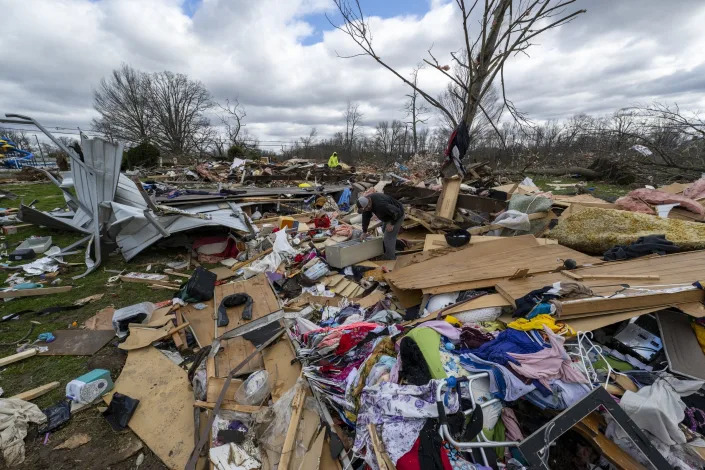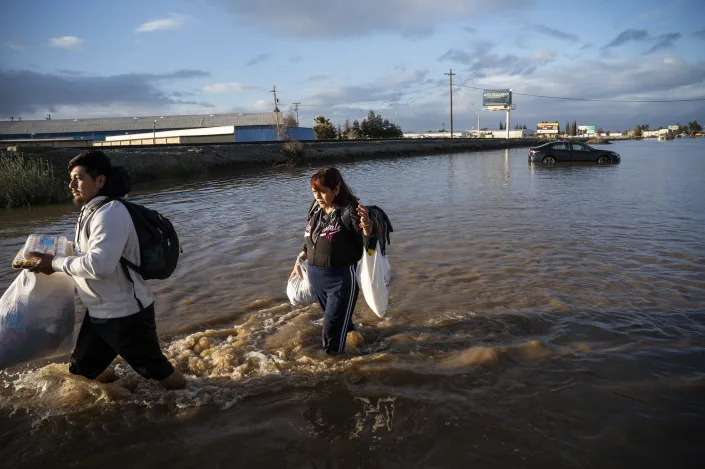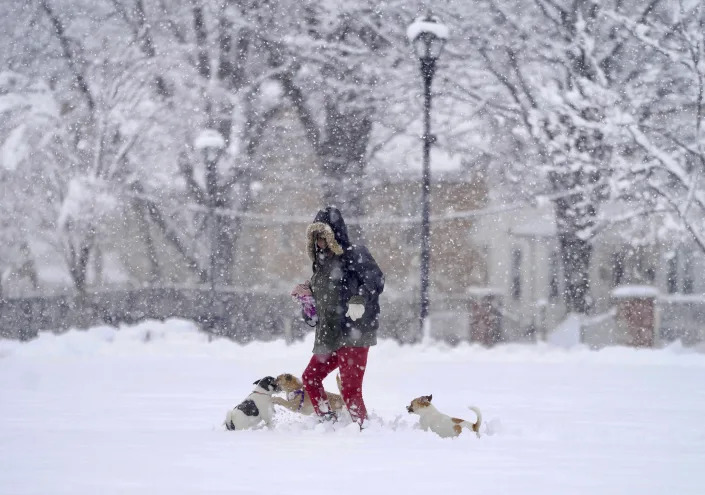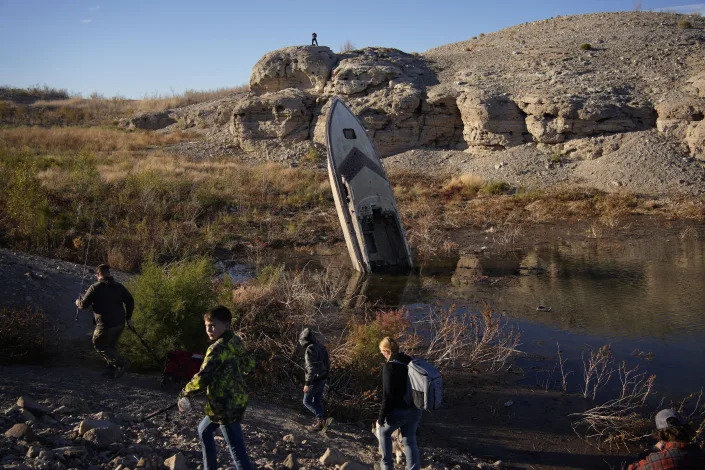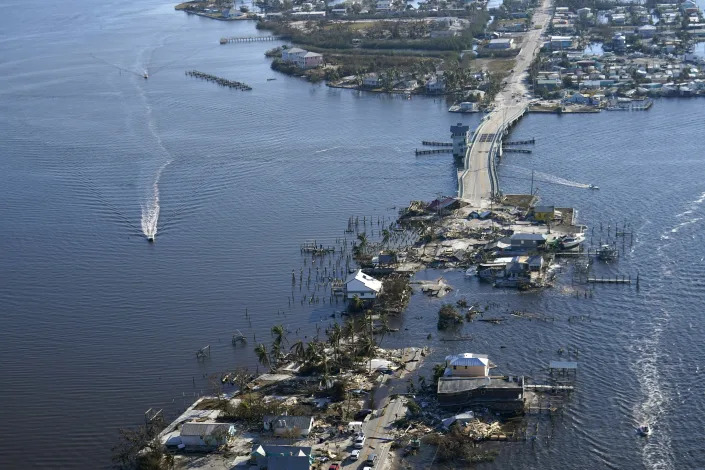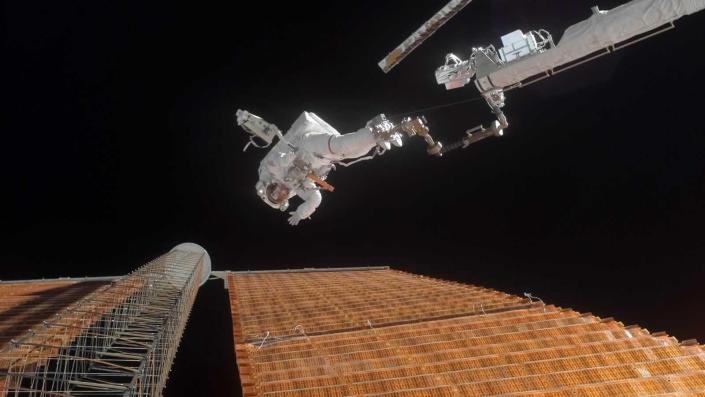Kyle Barr
Fri, March 31, 2023

Members of Rise and Resist participate in their weekly "Truth Tuesday" protest at News Corp headquarters on February 21, 2023 in New York City. Text messages and emails between various Fox News hosts and network executives obtained during a defamation lawsuit brought by voting machine company Dominion against Fox NewsMore
Frequent protesters stood in front of the Fox News building in New York City last month with signs citing court documents stemming from the Dominion Voting Systems lawsuit.
Fox News will be forced to defend its promotion of the “Big Lie” in court, as a Delaware judge ruled that a jury would need to decide whether there was “actual malice” in how the network let election disinformation loose upon its millions of viewers.
On Friday, Delaware Superior Court Judge Eric Davis ruled that Dominion Voting Systems has not yet proved Fox acted with libelous intent by promoting the election was stolen from former President Donald Trump. At the same time, the judge ruled against Fox News and Fox Corporation’s attempts to quash the lawsuit. He further gave Dominion the benefit that Fox’s statements, by themselves, could constitute defamation.
Dominion kicked up the hornet’s nest when it brought its $1.6 billion defamation lawsuit against Fox News back in 2021. The company has said it’s seeking recompense for lost profits due to the lies spread about the company. Dominion has filed similar lawsuits against ultra-conservative networks like Newsmax and OAN.
Davis wrote that Dominion has met the burden of proof to show that all of Fox’s promoted statements about the voting machine company were all lies. The judge added the evidence is “CRYSTAL clear [emphasis his] that none of the Statements relating to Dominion about the 2020 election are true.” A trial is set to start sometime in April.
The court held two hearings earlier this week to discuss the matter. In its summary judgment request, Fox News has tried to argue that its promotion of the big lie was just common journalist practice by discussing the election allegations coming from Trump. The network further claimed its reporting was protected under the First Amendment, and that there’s precedent protecting news sites from allegations later proven false.
On the flip side, Dominion argued Fox was actively promoting the big lie by publishing and promoting top election deniers.
Defamation suits like this hang on the thin thread of proving that one side had “actual malice” in its speech, meaning it acted knowing the information was false or acting with reckless disregard to a statement’s truth. It’s an incredibly hard burden of proof for plaintiffs in defamation cases, though at least Dominion has a lot of ammunition to fire at Fox, mostly from hosts’ and guests’ own lips.
The document retreads much of what came out in texts and emails from Fox executives and hosts. The main faces at Fox News regularly complained about Trump and the election conspiracy, calling it “shockingly reckless” and complaining about election conspiracists like Sidney Powell and Rudy Giuliani. In records from Fox Corporation Chair Rupert Murdoch’s deposition, the venerable scion of conservative media around the globe said he could have stopped Fox News from bringing on the election conspiracists, but chose not to.
Tom Hals, Jonathan Stempel and Helen Coster
Fri, March 31, 2023
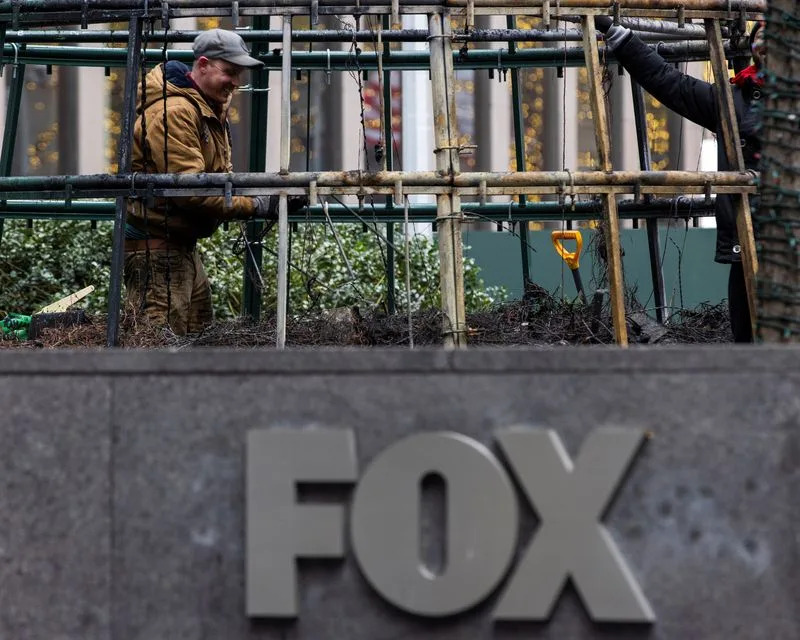
Workers clean up the burnt remains of a Christmas tree outside the News Corp. and Fox News building in New York
By Tom Hals, Jonathan Stempel and Helen Coster
WILMINGTON, Delaware (Reuters) - A jury will decide whether Fox Corp defamed Dominion Voting Systems with false vote-rigging claims aired by Fox News after the 2020 U.S. election, a Delaware judge ruled on Friday, dealing a setback to the media company that had sought to avoid a trial in the $1.6 billion lawsuit.
Delaware Superior Court Judge Eric Davis denied motions from Fox and partially granted Dominion motions to resolve the issue of defamation liability ahead of the scheduled April 17 trial date. The ruling puts the high-profile case in the hands of a jury that will determine whether Fox acted with actual malice and whether Dominion suffered any damages.
The trial, to be held in Wilmington, is expected to last roughly four weeks. It is possible the parties could still settle the case. Davis heard arguments from both sides during a two-day pretrial hearing on March 21 and 22.
“This case is and always has been about the First Amendment protections of the media’s absolute right to cover the news," Fox said in a statement. "Fox will continue to fiercely advocate for the rights of free speech and a free press as we move into the next phase of these proceedings.”
Dominion said it was gratified by the ruling and looked forward to the trial.
This is one of the most closely watched U.S. defamation lawsuits in years and involves one of America's largest cable networks, home to many prominent conservative commentators.
Denver-based Dominion sued New York-based Fox Corp and Fox News in 2021, accusing them of ruining its reputation by airing false claims by former President Donald Trump and his lawyers that its voting machines were used to rig the outcome of the election against him and in favor of Democrat Joe Biden.
Dominion has said in court filings that internal emails, texts and deposition testimony demonstrate that Fox personnel at every level - from producers to hosts, all the way up to Chairman Rupert Murdoch - knew the election-rigging claims were false and aired them anyway in pursuit of ratings as they lost viewers to far-right outlets that embraced Trump's claims.
Dominion argued this met the "actual malice" standard to win a defamation case under which a plaintiff must prove a defendant knowingly spread false information or acted with reckless disregard for the truth.
Davis, however, said actual malice will be determined by the jury.
The judge ruled in Dominion's favor on some elements of defamation including that the allegedly defamatory statements by Fox concerned Dominion, that the statements had been published by Fox and were false.
"The evidence developed in this civil proceeding demonstrates that (it) is CRYSTAL clear that none of the statements relating to Dominion about the 2020 election are true," wrote Davis, using all capital letters for emphasis.
Fox has argued that its coverage of the election claims was protected by press freedoms enshrined in the U.S. Constitution's First Amendment because it was newsworthy and properly framed as opinion or unproven allegations. Fox also has argued that Dominion's suit advances an overly broad interpretation of U.S. defamation law and is a threat to freedom of the press.
Lawyers for Fox also have invoked the legal doctrine of "neutral reportage," which holds that the press cannot be held liable for publishing newsworthy allegations in a neutral way.
Davis, however, said in his ruling the doctrine would not shield Fox from liability, because the network did not conduct disinterested reporting.
Fox faces a similar lawsuit by voting-technology company Smartmatic, which is seeking $2.7 billion in damages from Fox Corp, the cable network, Fox hosts and guests.
(Reporting by Tom Hals in Wilmington, Delawared; Editing by Jonathan Oatis and Bill Berkrot)
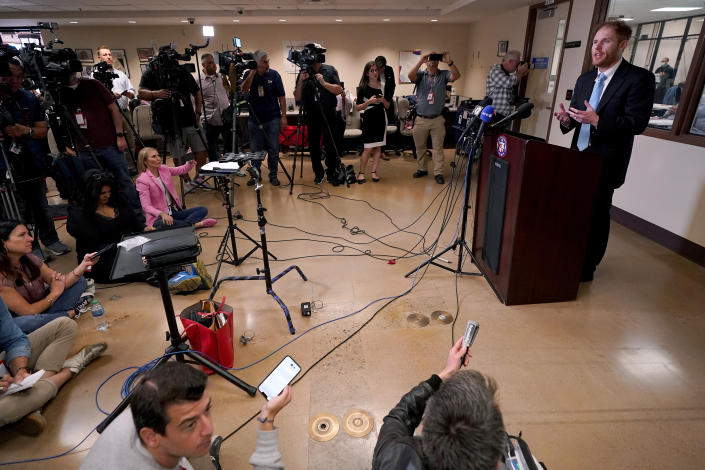
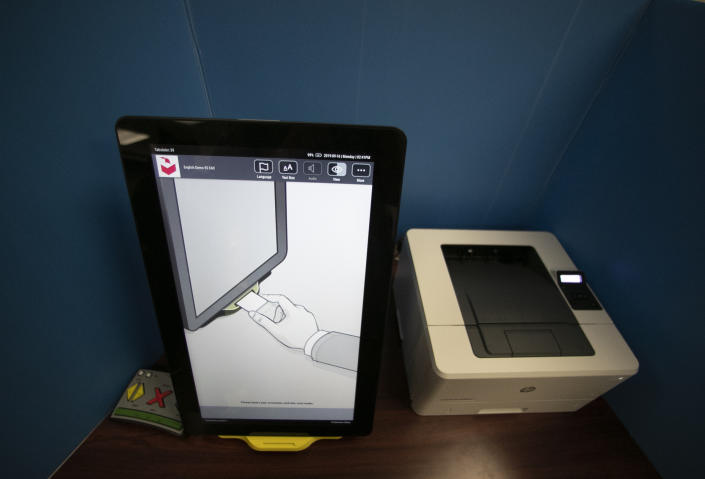
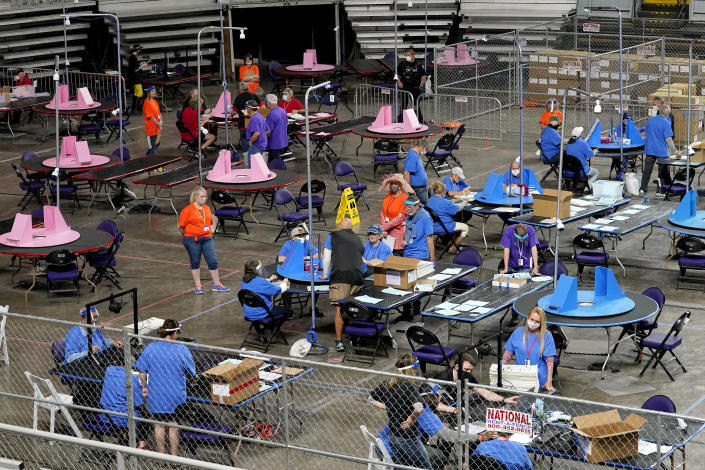

A woman points at Maricopa County Recorder Stephen Richer during the Maricopa County Board of Supervisors general election canvass meeting, Nov. 28, 2022, in Phoenix. Dominion Voting Systems has been ensnared in a web of conspiracy theories that have undermined public confidence in U.S. elections among conservative voters. (AP Photo/Matt York, File)
ASSOCIATED PRESS
CHRISTINA A. CASSIDY and JONATHAN J. COOPER
Thu, March 30, 2023
PHOENIX (AP) — In Arizona’s most populous county, elected officials are bracing for what could happen when it comes time to replace its $2 million-a-year contract for voting equipment.
Officials in Maricopa County, which includes Phoenix, say they have no concerns about their current vendor, Dominion Voting Systems. The problem is that the company has been ensnared in a web of conspiracy theories since the 2020 presidential race that have undermined public confidence in U.S. elections among conservative voters, led to calls to ban voting machines in some places and triggered death threats against election officials across the country.
“I have concerns over my own personal security if we re-enlist Dominion,” Maricopa County Recorder Stephen Richer, a Republican elected in 2020, said in a court filing. “It went from a company that nobody had heard about to a company that is maybe one of the most demonized brands in the United States or the world.”
That sudden turnabout in fortunes for the Colorado-based voting machine company is at the heart of a $1.6 billion defamation lawsuit it has filed against Fox News, with the trial scheduled to begin in mid-April. Dominion claims Fox defamed it by repeatedly airing false claims about the company’s voting machines and software. Court records and testimony revealed that several Fox hosts and executives didn’t believe the claims pushed by former President Donald Trump and his allies since the 2020 election but continued to air them, in part because they were worried about losing viewers.
Fox has argued the network was reporting on allegations that were newsworthy as Trump and his Republican allies contested his loss to Democrat Joe Biden. The network has said Dominion has been overstating its value, could not have suffered damages in the amounts it is claiming and has played down security concerns about its machines. Fox lawyers also argue that documents produced in the case show Dominion is in a solid financial position.
“The case has no merit, and the outrageous damage claim only highlights its naked attempt to suppress legitimate speech protected by our Constitution," Fox said in a statement.
Dominion has been presenting evidence that it says shows lost contracts and business opportunities over the past two years. It cites misinformation as the reason officials in some counties in Nevada, Pennsylvania and Tennessee have terminated their contracts with it while counties in Iowa, Kansas, Massachusetts, Missouri, New Jersey and Ohio have opted against renewing.
One expert, in a report submitted by Dominion in November as part of its lawsuit, estimated the company had experienced nearly $16 million in lost profits from customers that either terminated their contracts early or decided not to renew.
The same estimate projected Dominion has already suffered $72.3 million in lost opportunities, which includes potential contract extensions, additional equipment sales and service contracts with existing customers, and new business.
Overall, the expert estimated the company had experienced a $920 million decline in value, which includes the estimated taxes the company would have to pay if it were awarded damages. The expert also estimated additional future lost opportunities that have yet to be detailed publicly.
“The evidence will show that Dominion was a valuable, rapidly growing business that was executing on its plan to expand prior to the time that Fox began spreading and endorsing baseless lies about Dominion voting machines,” Stephanie Walstrom, a Dominion spokeswoman, said in a statement.
The company's challenges haven’t ended, as conspiracies about the last presidential election have permeated much of the Republican Party. Trump allies continue to travel the country meeting with community groups and holding forums to promote election conspiracies.
The conspiracies have been cited by some county officials, who say they are responding to constituent concerns, as justification for refusing to certify election results and have fed attempts to decertify or ban voting equipment.
“People aren’t acting rationally,” said Lawrence Norden, an election security expert with the Brennan Center for Justice, which has advocated for more voter access and money for election offices. “They are canceling contracts at great expense to their taxpayers.”
Not included in the Dominion expert’s report are more recent actions, including in Shasta County, California, where the board of supervisors terminated its contract with Dominion early. At a meeting in January, the board cited a loss in public confidence in the machines, which are used in the county to tabulate paper ballots marked by hand.
In 2020, Trump won Shasta County with 65% of the vote.
“Dominion has to prove to me that we have a free and fair election,” said Board of Supervisors Chair Patrick Henry Jones, who led the effort to end the contract. “Just because we’re all sitting up here and elected doesn’t mean we had free and fair elections every single time.”
The board is now pursuing a plan to count ballots by hand, a process experts consider to be less accurate and more time-consuming in all but the smallest of jurisdictions. Trump ally Mike Lindell, the MyPillow CEO, has promised to support their efforts to get rid of their voting machines.
In an interview, Lindell said he was prepared to help cover the costs of any lawsuits Shasta County might face.
“They are within their rights of going to paper ballots and a hand count,” Lindell said. “They have to be courageous, or we are not going to get rid of these machines.”
Cathy Darling Allen, the elected Shasta County clerk and registrar of voters, has defended the voting equipment and blamed “disproven conspiracy theories” for undermining the county’s election system and staff. She has warned the county was in danger of not being able to conduct elections.
“Their actions have placed the security of our elections at risk and created a dangerous precedent encouraging outsiders to undermine our elections at the county level,” Darling Allen wrote in testimony to Congress this month.
She estimated that hand-counting all ballots in a presidential election with 50 contests on the ballot would cost at least $1.6 million and require hiring nearly 1,300 temporary employees. The county has more than 111,000 registered voters.
Election security experts were concerned that the market for voting machines already was limited before the 2020 election, dominated by three companies. One Dominion competitor, Election Systems & Software, has not reported contract cancellations but has also been forced to defend its reputation amid the voting machine conspiracies.
In a recent hearing, Erin Murphy, an attorney for Fox, told the Delaware Superior Court judge presiding over the defamation case that Dominion has “a real speculation problem” regarding its claims for damages and said Dominion’s lost-profits argument appears to be based on the presumption that it would have won every contract it sought had it not been for Fox’s coverage of the election fraud allegations.
That ignores the fact that Dominion’s rivals have sometimes offered lower bids or more attractive technology, Murphy said. Fox has highlighted internal communications, including a chat in which one Dominion employee said, “God our products suck,” as well as a federal advisory outlining potential vulnerabilities reported in a Dominion system.
Arizona's Maricopa County has been at the forefront of the conspiracy theories about Dominion. The GOP-controlled Legislature in 2021 used its subpoena power to seize the county’s voting equipment and hired a firm run by Trump supporters to comb through it in search of evidence the machines were compromised. The firm found none, and Doug Logan, who oversaw the project, conceded in a private text message that surfaced in an unrelated lawsuit that “the Dominion machine is actually quite precise." Nevertheless, distrust remains rampant.
Dominion’s executive vice president of sales, Waldeep Singh, said in a court filing that the situation in Arizona has made it impossible to do business there. He blamed conspiracy theories for scuttling the company’s chances of winning business in Yavapai County, a conservative rural county north of Phoenix.
“All I can tell you is, based on my experience and our trajectory at the time in Arizona, we were trending in a very positive direction,” Singh said.
Now, he said, “I don’t think we’ll win anything in Arizona again.”
___
Cassidy reported from Atlanta. Associated Press writers Randall Chase in Wilmington, Delaware; David Bauder and Jennifer Peltz in New York; and Nicholas Riccardi in Denver contributed to this report.

